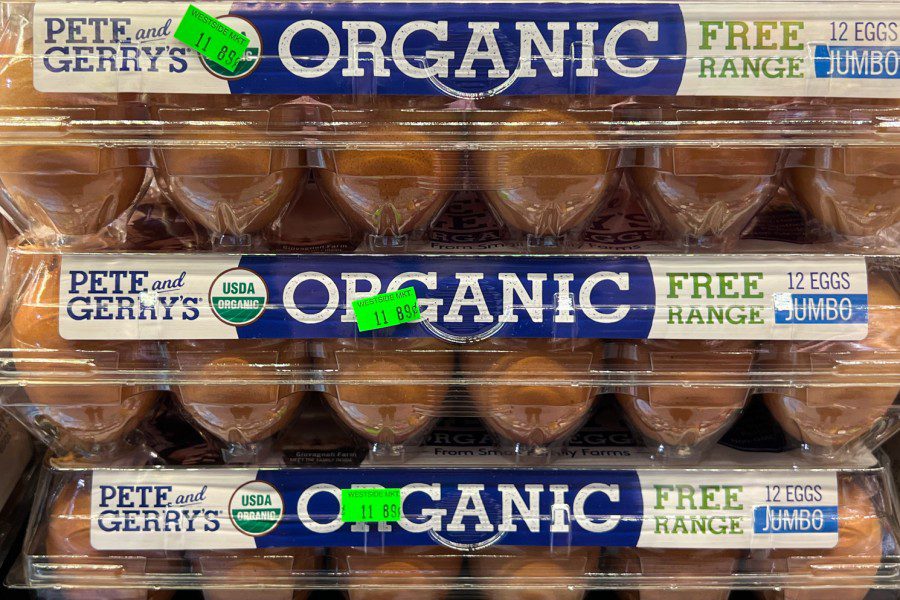Despite minor inflation relief, students still struggle paying for groceries
NYU students are changing their shopping habits to avoid overspending amid higher-than-normal grocery prices.
Cartons of eggs displayed at a grocery store in New York City. (Emily Sorkin for WSN)
October 24, 2022
Jurnie Auguste, a CAS sophomore, doesn’t eat as much at school compared to when she visits home. Since inflation has increased the already-high cost of living in New York City, Auguste, like many other students, must stretch her budget — sometimes skipping meals to make the most of the money she allotts to groceries .
“I buy less, and I try to stretch it out,” Auguste said. “I rely on my meal plan more.”
Despite signs of slowing inflation, NYU students are still feeling the strain as they attempt to avoid high grocery prices. Over the last year, food prices in New York City increased by 8.5%, according to the U.S. Bureau of Labor Statistics, but the cost of certain food items decreased by almost a half of a percentage point in September. This decrease comes after the United States reached its highest level of inflation in 40 years — which has worsened food insecurity.
Megan Xiao, a Steinhardt sophomore, said she thinks about her budget before making any purchases.
“I don’t have that much money to begin with,” Xiao said. “I really look at the prices, and I will choose the cheaper option — even if it’s not exactly the better option — just because I can afford it more. It may not be the best for my diet or my mental health, but I really have to keep finances in mind.”
SPS first-year Alekhya Mangharam said she has found ways to navigate the high prices in the city by taking advantage of her meal plan to spend less money on groceries. She said that now, when she swipes into NYU dining halls, she takes extra food to go in order to minimize the amount of money she spends otherwise.
“You have to really look and search for what you can get and maximize it,” Mangharam said. “I’ll go to a dining hall and pick up bananas, apples or fruit, and I’ll get a lot of takeaway boxes.”
New York City has the sixth highest cost of living in the world, according to an Economist Intelligence report that compiles the cost of food, drink, clothing, household supplies, rent, transportation, utilities, schools and other services.
City Harvest, a nonprofit dedicated to fighting hunger, reported that food insecurity in New York City has increased by 36% since the beginning of the pandemic.
Steinhardt sophomore Linnea Luthra, who does not have a meal plan, buys her groceries from Trader Joe’s, where she hasn’t noticed a change in prices. Price increases at Trader Joe’s have remained below the national average, and consumers have paid 1.2% less in the last year.
“The fact that I’m restocking my entire fridge and only spending $40 is amazing,” Luthra said. “At Whole Foods, though, prices are completely insane, and I never shop there because it’s just unreasonable for me as of now. I’m lucky because Trader Joes is right next to me, so I never have to go anywhere else.”
Rising food costs are also hurting eateries — bodegas, restaurants and food carts citywide are raising their prices. Owners worry that increased prices may drive away customers, but have little choice, as ingredient prices continue to rise.
Adrianna Nehme and Lauren Ashe contributed reporting.
Contact Paige Ganim at [email protected].
























































































































































